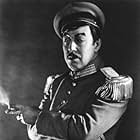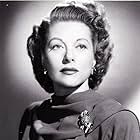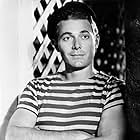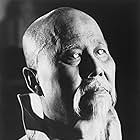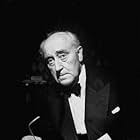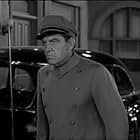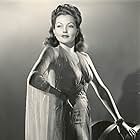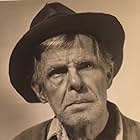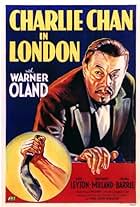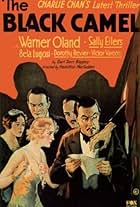IMDb RATING
6.9/10
1.6K
YOUR RATING
When a prominent official is murdered at a banquet honoring Charle Chan, the detective and son Lee team up to expose an opium-smuggling ring.When a prominent official is murdered at a banquet honoring Charle Chan, the detective and son Lee team up to expose an opium-smuggling ring.When a prominent official is murdered at a banquet honoring Charle Chan, the detective and son Lee team up to expose an opium-smuggling ring.
Jon Hall
- Philip Nash
- (as Charles Locher)
Lynn Bari
- Second Hotel Switchboard Operator
- (uncredited)
Jack Chefe
- Reporter
- (uncredited)
Harrison Greene
- Tourist in Versailles Cafe
- (uncredited)
Charles Haefeli
- Crook on Boat
- (uncredited)
Eddie Hart
- 'G' Man
- (uncredited)
Russell Hopton
- 'G' Man
- (uncredited)
Gladden James
- Forrest - Valet
- (uncredited)
Storyline
Did you know
- TriviaLee Chan(Keye Luke), draws a caricature of himself and a woman he's sweet on in Shanghai. The drawing was actually drawn by Keye Luke, who was an accomplished artist.
- GoofsFrederik Vogeding's character is called Ivan Marloff in the actual movie, but is listed as 'Burke' in the credits for some reason.
- Quotes
Colonel Watkins, police commissioner: Sir Stanley had so many friends, but few enemies.
Charlie Chan: Only *one* enemy necessary to commit *murder*.
- ConnectionsEdited into Who Dunit Theater: Charlie Chan in Shanghai (2021)
Featured review
Filmed in 1935, CHARLIE CHAN IN SHANGHAI is the 9th film in the Fox series. It is also, rather curiously the only Chan film that would be set in Asian--the only time Hollywood allowed Chan to make it back to China.
In this episode, Chan travels to China--presumably on holiday. But Chan's holidays have a way of being investigations in disguise, and no sooner does his ship dock than he receives a warning note; later that evening a close personal friend is unexpectedly killed by an ingenious booby trap which may have been directed at Chan himself. Needless to say, Chan assumes a major role in the investigation, and quickly finds himself the target of several murderous assaults. Could it all be tied to an infamous opium smuggling ring? Could be! Although this particular Chan film does not offer a notable supporting cast, Keye Luke is once more along for the ride as Chan's "Number One Son" Lee, and every one plays a smart pace. The plot, while typically gimmicky, is superior and offers a final twist that Chan fans may see coming in advance--but only if they know Chan's character and very high standards.
Chan films are often accused of being racist, and critics often complain that the actors playing Chan wore "yellowface" make up. The films, however, must be seen within the context of their era. In the 1930s, Hollywood presented most Asian characters as either servile or as Fu Manchu-like entities; Chan was actually just about the only positive Asian character going, and as such the films were tremendously popular with Asian-American audiences of the era.
True enough, Chan is inevitably played by an occidental actor, but this was typical of the era, in which star status was considered more important than racial accuracy. (Other Asian characters were always portrayed by Asian actors, Keye Luke being a case in point.) Whatever the case, neither Warner Oland or the later Sidney Toler wore significant make-up for the role, and Oland--although a Swede by birth--actually had a strong strain of Asian ancestry in his family tree.
While I cannot say that CHARLIE CHAN IN SHANGHAI is among my favorite Chan films, it is well-made, a solid entry in the series. Chan fans should enjoy it quite a bit.
Gary F. Taylor, aka GFT, Amazon Reviewer
In this episode, Chan travels to China--presumably on holiday. But Chan's holidays have a way of being investigations in disguise, and no sooner does his ship dock than he receives a warning note; later that evening a close personal friend is unexpectedly killed by an ingenious booby trap which may have been directed at Chan himself. Needless to say, Chan assumes a major role in the investigation, and quickly finds himself the target of several murderous assaults. Could it all be tied to an infamous opium smuggling ring? Could be! Although this particular Chan film does not offer a notable supporting cast, Keye Luke is once more along for the ride as Chan's "Number One Son" Lee, and every one plays a smart pace. The plot, while typically gimmicky, is superior and offers a final twist that Chan fans may see coming in advance--but only if they know Chan's character and very high standards.
Chan films are often accused of being racist, and critics often complain that the actors playing Chan wore "yellowface" make up. The films, however, must be seen within the context of their era. In the 1930s, Hollywood presented most Asian characters as either servile or as Fu Manchu-like entities; Chan was actually just about the only positive Asian character going, and as such the films were tremendously popular with Asian-American audiences of the era.
True enough, Chan is inevitably played by an occidental actor, but this was typical of the era, in which star status was considered more important than racial accuracy. (Other Asian characters were always portrayed by Asian actors, Keye Luke being a case in point.) Whatever the case, neither Warner Oland or the later Sidney Toler wore significant make-up for the role, and Oland--although a Swede by birth--actually had a strong strain of Asian ancestry in his family tree.
While I cannot say that CHARLIE CHAN IN SHANGHAI is among my favorite Chan films, it is well-made, a solid entry in the series. Chan fans should enjoy it quite a bit.
Gary F. Taylor, aka GFT, Amazon Reviewer
- How long is Charlie Chan in Shanghai?Powered by Alexa
Details
- Release date
- Country of origin
- Language
- Also known as
- Charlie Chan i Kina
- Production company
- See more company credits at IMDbPro
- Runtime1 hour 11 minutes
- Color
- Aspect ratio
- 1.37 : 1
Contribute to this page
Suggest an edit or add missing content

Top Gap
By what name was Charlie Chan in Shanghai (1935) officially released in Canada in English?
Answer








